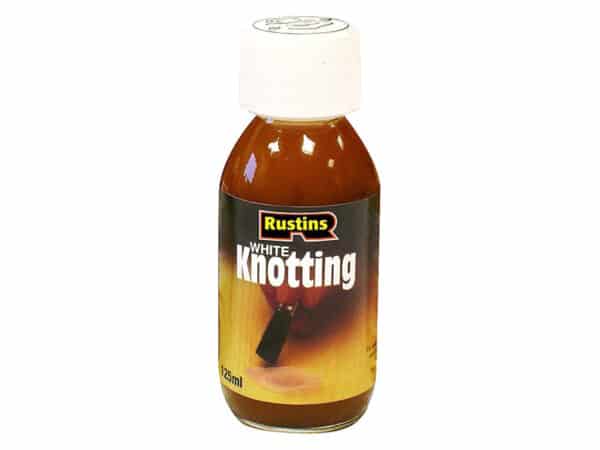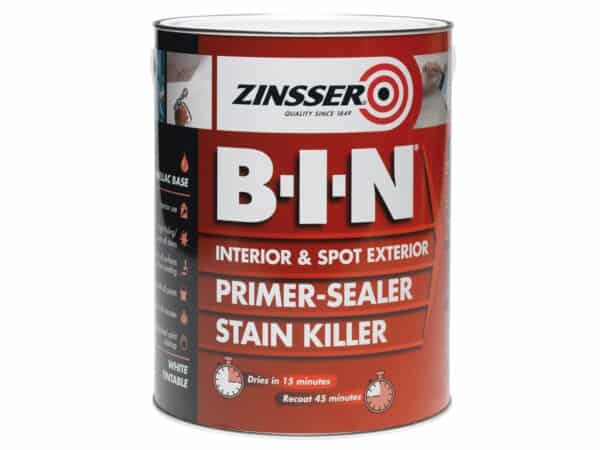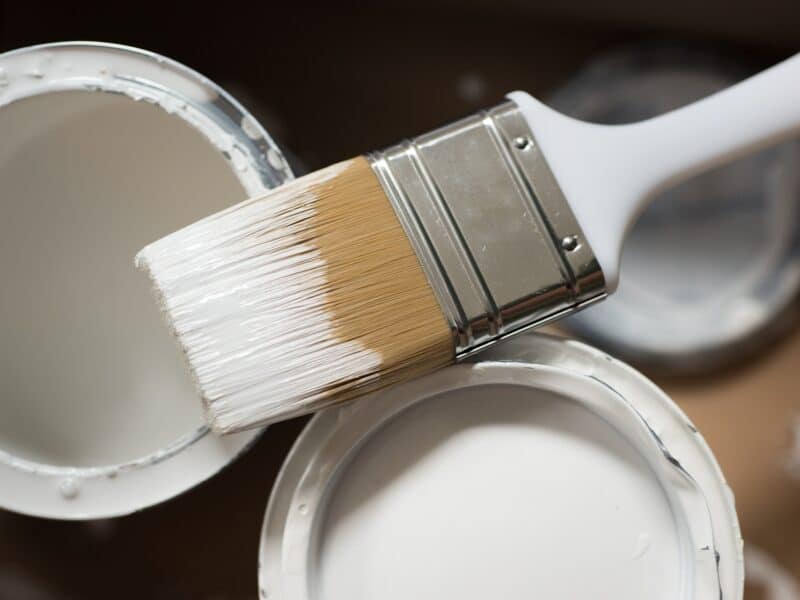Knots in wood can cause problems with painted finishes as the resin within will stain and show through most paint finishes. Softwood timber, commonly used for architraves, skirting boards and window trim, is particularly likely to contain knots and the result can be unsightly if not treated properly before painting.
Procedure for treating knots in wood
The correct procedure for dealing with knots is firstly to remove any visible resin bleed with white spirit. Then, seal the knot area with 2 coats of patent knotting – which is a solution of shellac in methylated spirit (or denatured alcohol).
When the knotting has fully dried, it can be lightly abraded to provide a key and then painted as normal. In most cases this will be sufficient to stop any further problems although some very deep knots will continue to exude resin which will eventually migrate through to the surface of the paint.
There is little you can do to mitigate this without removing the knot and plugging with a fresh piece of timber or using a two-pack wood filler.
It’s for this reason that timber used for joinery trim should be carefully selected so this problem is avoided in the first place. Alas, as a decorator, you are often expected to solve problems originating from other people’s lack of care and extremely knotty timber is one such example.
Treating knots when using water-based finishes
The advent of water-based finishes has also introduced another problem in that standard patent knotting is often not compatible with these paints. However, where the knots aren’t prominent the water-based coating often will be sufficient to block any resin-based stains.
In severe cases, staining can be mitigated by the use of a bleached white knotting (not actually white), formulated not to react adversely with water-based finishes so it will not stain through as would regular patent knotting solutions.
Just to add a bit more confusion, there are also self-knotting primers available for both oil and water-based finishes which negate the need for a separate knotting treatment…
Products for sealing knots in woods
This isn’t an exhaustive list but these are some of the most popular knotting solutions and self-knotting primers…

Traditional knotting solution for all types of interior and exterior woodwork where an oil-based finish is being used
[amazon link]

Bleached white knotting for use with water-based finishes
[amazon link]

A quick-drying shellac-based all-round primer/sealer that can be used to seal knotty surfaces
[amazon link]

An acrylic primer/undercoat that will also seal knots where a water-based finish is applied
[amazon link]

A self-knotting primer formulated for priming/sealing very resinous hard and soft woods, for interior and exterior use
[amazon link]
Conclusion
Knots in timber are inevitable, to some degree, but sealing them properly will prevent your paintwork from being ruined by unsightly brown stains. Overall it’s one of those minor preparation steps that doesn’t take that much effort and will always pay off in the long term.


